Crochet Tools for Beginners
- Home
- Crochet Tools for Beginners
Are you wondering about the kind of tools that you should have in your crochet kit? Crochet tools for beginners can be a bit of a money trap. As a beginner it is easy to go overboard and buy out you craft store but you do not need to go nuts. You can start with a small stash of tools and build from there as you gain experience and start working with new techniques or projects.
To help you work out what you might need, I will go through all of the tools I have in my kit and explain why I need them and what I use them for.
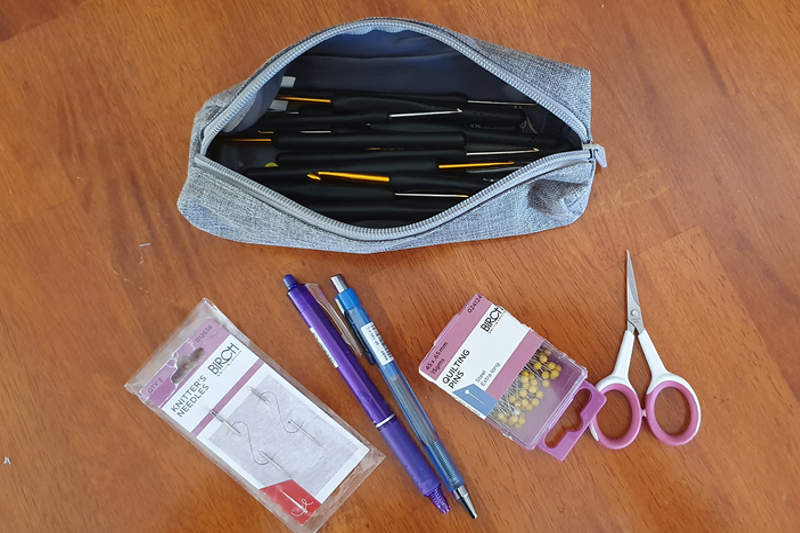
I actually have two different kits. One I use for what I call normal crochet projects - blankets, bags or clothing, and another that I use for amigurumi projects. The one in the picture above is the 'normal' kit.
- a pencil case
- crochet hooks
- knitters needles for sewing up projects
- small pair of sharp scissors for cutting yarn
- tape measure
- quilting pins (longer than normal sewing pins) for holding piece together when sewing seams etc.
- pens for making notes on patterns or the mark a round/row count
- stitch marker - especially useful when working in rounds. I use hair pins as stitch markers
Crochet Tools for Beginners: Your Crochet Kit Container
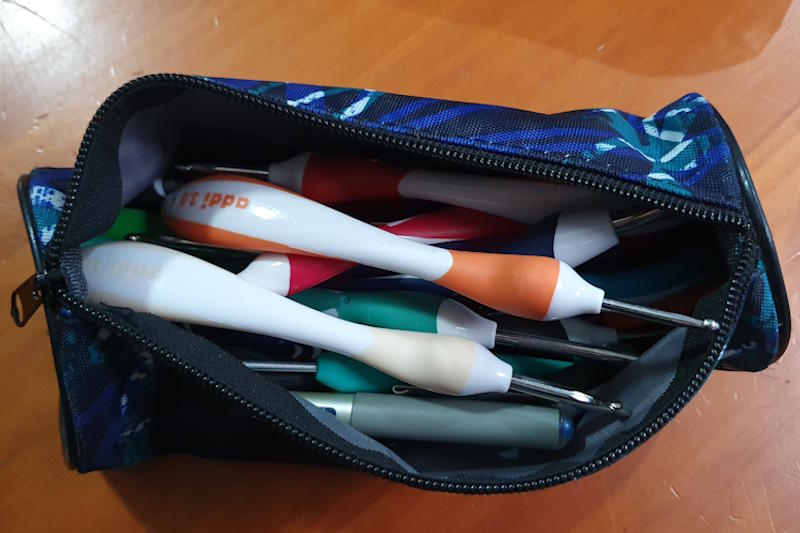
I use pencil cases to hold my crochet tools. Admittedly I look for a large pencil case to keep it all my tools in one place.
A pencil case makes it really easy to keep it all together and I can easily transport all my tools when I am travelling or working away from home.
The zip on the case prevents all the bits and bobs from escaping so I always know where my tools are.
Most Important Crochet Tools for Beginners: Crochet Hooks
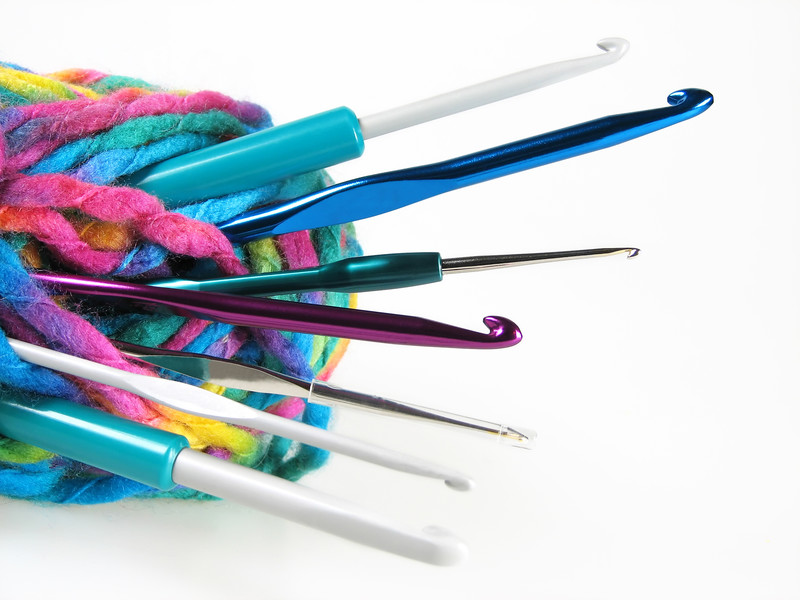
I have a full set of crochet hooks from a 1.0mm up to an 8.0mm. The larger hooks do not fit into the pencil case with all of the other hooks so I have them in two different pencil cases sorted by size and I have the other tools in both kits (i.e., the scissors, knitters needles, pens and stitch holders). So I can just grab the kit I need for the project I want to work on - the large hook kit or the small hook one - and I am good to start working.
As I said above, I do have a full set of hooks (more than one set actually) but you do not need to go nuts and buy a full set when you are starting out. You can buy your hooks one or two at a time to work with as you work on your projects. You might never need a full set if you stick to one yarn thickness for you crocheting. I work with 4 ply cotton, finer crochet cottons, and 8 ply, 10 ply or 12 ply wools depending on what type of project I am doing.
For example I use fine crochet cottons to crochet eyes for my dolls, 4 ply cotton to make the actual dolls, 8 ply acrylic wool to make the loveys and 10 or 12 ply for making bags. For the eyes I need 1.0mm to 1.75mm hooks, for the dolls I use 2.0mm and 2.5mm hooks. The loveys are made using 4.0mm hooks ad the bags use anything from 5.0mm hooks up to the 8.0mm hooks.
So buy the hooks you need for your first project, and build up your collection as needed.
Other Crochet Tools for Beginners
Sharps
A keep a pair of small sharps (scissors) in each kit. I found that if I didn't keep them in the kit, I would put them down after using them and then not being able to find them the next time I needed them. I would forget where I left them or the Grandkids would run off with them, so I bought one pair for each kit (2 normal kits - small and large, and 1 ergonomic kit). I also have a pair attached to the inside pocket of my crossbody satchel for when I am crocheting on the way to work.
A pair of sharps will make your life easier when you are cutting your threads.
Pins
I always have a container of pins handy when I am crocheting. I do a lot of amigurumi (toys) and the pins are useful for positioning arms, legs, ears, noses etc before sewing to make sure that I am happy with the alignment. The pins I use are actually quilting pins, they are longer than the usually sewing pins and do a great job at holding the little pieces in place.
I also have some 20 cm long double pointed knitting needles with beads glued to one end that I use for holding heads on bodies while I am attaching them. Not strictly necessary when you are just starting your crochet journey, but I find them very useful.
Knitters Needles
Knitter needles are designed for use with yarn. The needles are reasonable large with a good sized eye for threading yarn. 8 ply yarns can easily be threaded through the eye of the needle.
I use these as I also knit, but any darning needle with a large eye will do the trick. You will need a needle if your project has seams or parts that need to be joined together.
Measuring Tapes, Stitch Holders and Other Bits and Pieces
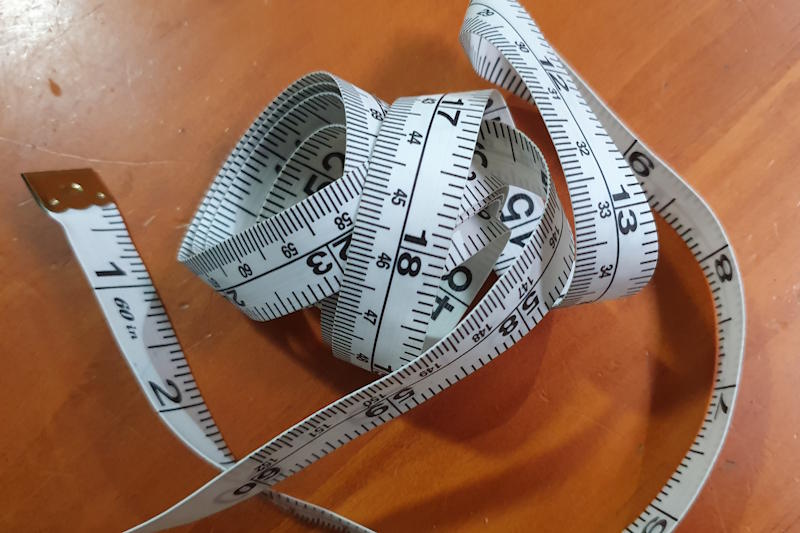
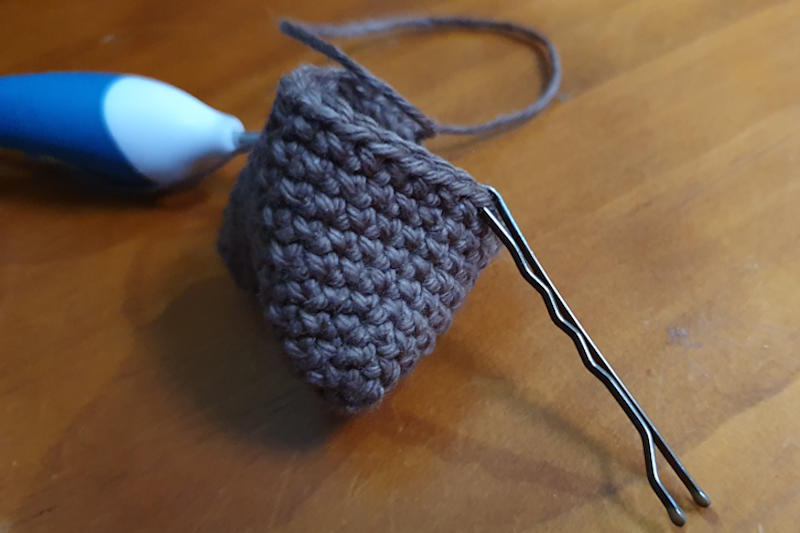
I usually have a measuring tape in my kits so that I can measure the progress of my work - useful for blanket projects etc, but I don't tend to use it much for my amigurumi.
Stitch holders - I use them all the time. You can buy them in packs from any good craft store but I just use hair clips. You can get short ones that work really well if you are working in rounds. You can skip stitch holders if you are just using them to mark a place in your work, for that you can tie a piece of yarn around the stitch in a contrasting colour and you are good.
I also have a couple of pens in my kit so that I can mark any changes I make to the pattern I am using - I learnt a long time ago that relying on memory when you change something is not always a good idea, especially if you need to make a second identical piece!
I also use my pen to mark the number of rounds when I have a lot to do. I just make a mark on a piece of paper for each round to keep count. You could also invest in a round counter if that suit you better. You can get round counter rings that work quite well.
Recent Articles
-
Is it Easy to Crochet
Sep 25, 25 03:34 AM
Is it easy to crochet? A common question that many crocheters are asked and to be honest the answer is most likely to be yes and no. -
Granny Square Patterns
Sep 18, 25 03:11 AM
Are you looking for Granny Square Patterns? A lot of beginners start their learning process with making granny squares. -
My Large Amigurumi Dolls
Sep 18, 25 03:10 AM
Let me show off a bit - check out my large amigurumi dolls. They are all hand made by me and available for purchase.






